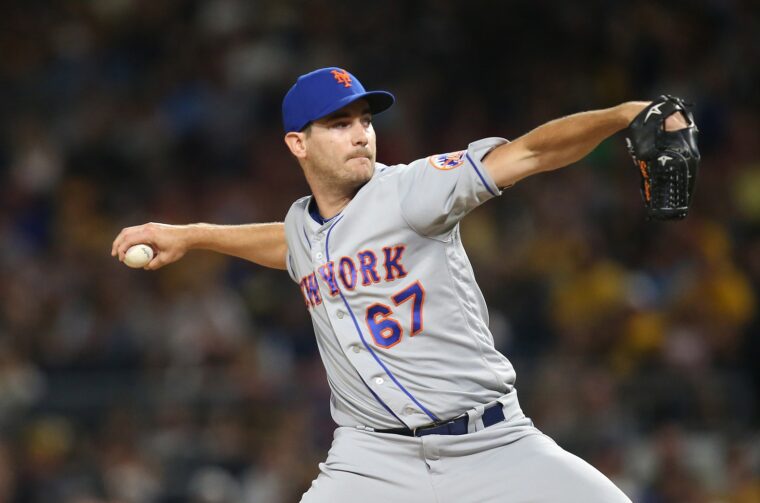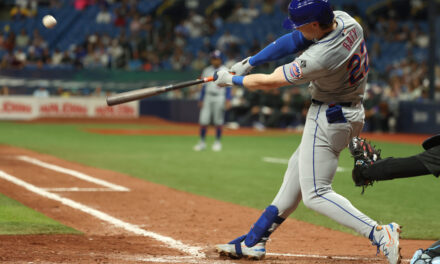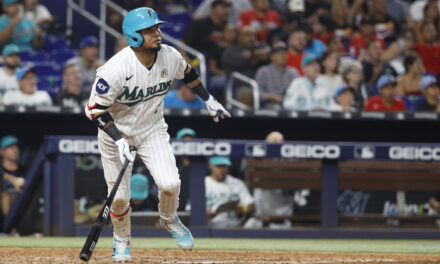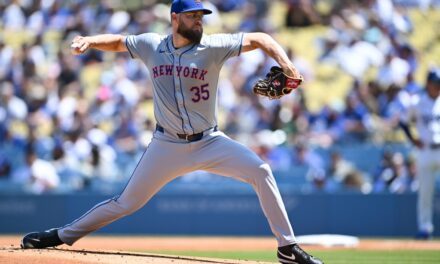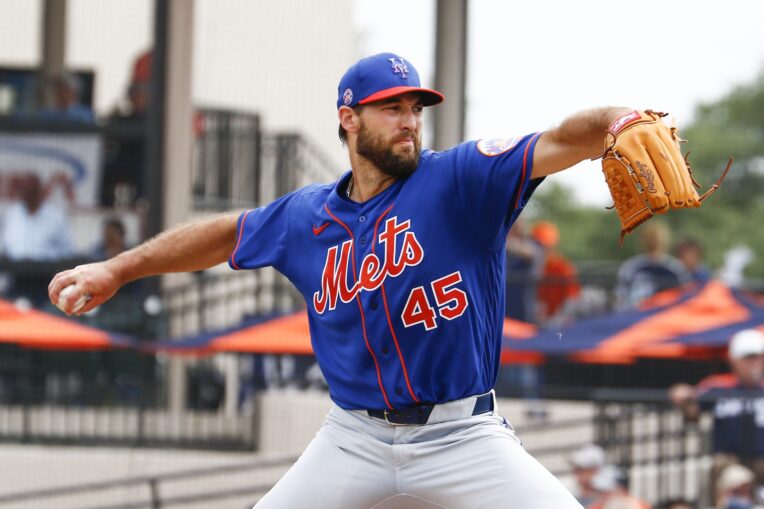
Noah Syndergaard‘s UCL tear takes some serious wind out of the Mets’ sails. Sails that have all but already lost their wind due to the dark cloud the coronavirus outbreak has cast over the (hopefully) impending season, but that is neither here not there.
It is assumed that Michael Wacha will take over as the fifth starter, which adds credence to his proclivity that he’s had a rotation spot all along. Instead, Wacha and the Mets would both be better served if the team deployed him as a reliever and explored other rotation options. This is due in part to Wacha’s diminished skill set, but also the potential he offers as a reliever in addition to the not-so-bad starting options the Mets have besides him (especially if he succeeds in the bullpen).
Wacha’s Decline
Syndergaard or no Syndergaard, there is little reason to believe Wacha can be an effective starting pitcher at this juncture of his career. His devolution has been well documented, falling from frontline starter to scrap-heap signing in just a few short seasons. An unsightly 18.5 K% last season was a career-low and catalyzed an atrocious 5.61 FIP. Once able to make use of four pitches successfully, now it seems Wacha only has one.

His fastball’s effectiveness has been zapped as its velocity has declined each of the last three seasons. It generates next to no swinging strikes, is hit well, and really lacks any sort of desirable quality whatsoever.

Michael Wacha, Disgusting 85mph Changeup. 😷 pic.twitter.com/IsVNhxgwt1
— Rob Friedman (@PitchingNinja) April 17, 2019
Wacha As Reliever
A shift to the bullpen would allow Wacha to refine his repertoire with a newfound focus on the pitch. For comparison’s sake, 5 RPs threw off-speed, non-breaking pitches (changeup or splitter) more than 50% of the time last season: Luis Avilan, Oliver Drake, Yoshihisa Hirano, Hector Neris, and Tommy Kahnle. Not all of them have a devastating fastball. In fact, most of them don’t. Yet, each was still effective overall on the backs’ of their primary pitch.

Wacha’s changeup compares favorably and that is without an expected gain in fastball velocity he would enjoy as a reliever. It sat between 94 and 95 mph over the course of his career before regressing in 2018 and again in 2019. However, for the second consecutive spring, Wacha’s fastball has ticked up a notch. Last March, Eno Sarris of The Athletic reported him touching 97, a figure he again approached this Spring.
Michael Wacha struck out a pair last night in West Palm Beach. Dusty Baker said Wacha's velocity (which sat 95-96) was the best he had seen from him. #Mets pic.twitter.com/tE0Cxj7iGw
— Jacob Resnick (@Jacob_Resnick) March 7, 2020
Starters will only throw a handful of innings during spring appearances and may be inclined to air it out a little bit, a preview at what could be if they were asked to relieve. A Wacha who doubled his changeup usage and sat 95-96 would be a real-life weapon. The addition of a potentially upper echelon reliever immediately would do wonders for the Mets’ bullpen depth and allow for some more flexibility.
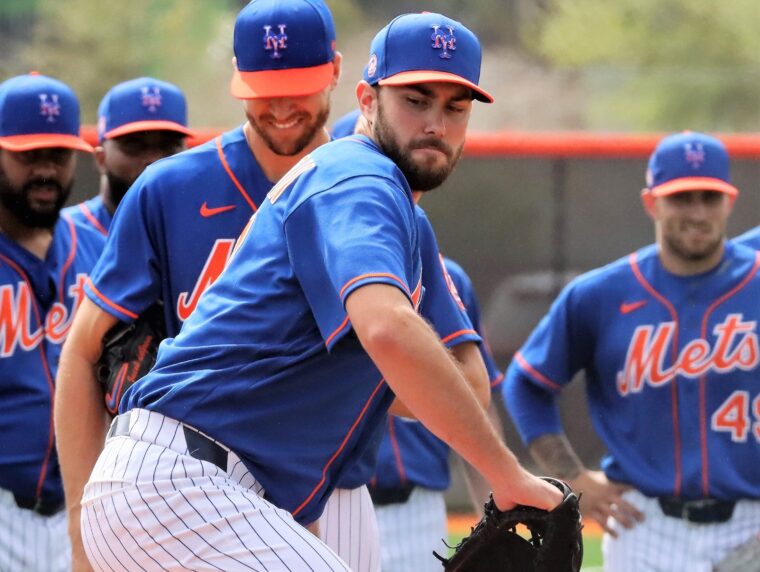
Photo by Ed Delany, MMO
Other Rotation Options
Namely, the option of deploying Seth Lugo as a starter. All things considered, there is a compelling argument to be made that Lugo is now the third (I’d even entertain second) best starting pitcher on the roster. The ideal role for Lugo would be pitching the bulk of his innings out of the pen, but chipping in spot starts depending on matchups, injuries, or scheduling quirks. Much like how the Dodgers deploy Ross Stripling, Lugo could offer even more value accruing a portion of his 90-110 IP as a starter.
The problem is he’s the team’s best reliever right now. He’s also been pitching with a partial tear of his UCL and dealt with shoulder issues last season, so who knows how many innings he should be giving and how much back and forth between roles could wear him down. The potential is tantalizing, but not a risk the team may be willing to take.
So, the likely options, sans Wacha, are Corey Oswalt or David Peterson. Oswalt gets a bad rap, but he made tremendous strides in 2019, namely cutting his walk rate in half from 8.6% to 4.3%. The momentum seemed to carry over this spring as he pitched 8 innings, struck out 6, allowed 1 earned run and walked none. This trend of improved K-BB% makes him intriguing at the very least.
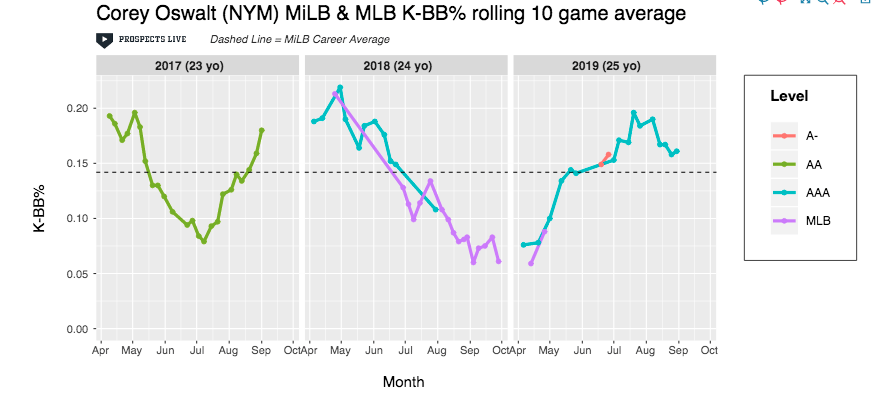
Peterson has the better pedigree of the two: a first round pick in 2017 out of Oregon and consistently finding his way into Mets’ top prospects lists. Michael Mayer of MMO just put out an exclusive on Peterson and Baseball America wrote him up in January. His fastball sits 91-92 and his curve is a work in progress, but he pounds the zone and uses his slider to miss bats. Peterson’s SwSt% of 13.7 was 47th highest across all of Double-A among pitchers who threw at least 50 innings (272 total pitchers). This rate was higher than that of Matt Manning, Ian Anderson, and Logan Gilbert, each of which is more highly regarded than Peterson.
Neither have ace potential, and neither is ideal, but the Mets could realize more value by using a combination of the two and Lugo in a more limited sense to start the games vacated by Syndergaard while Wacha relieves rather than Wacha being thrust into a traditional starter’s role.


